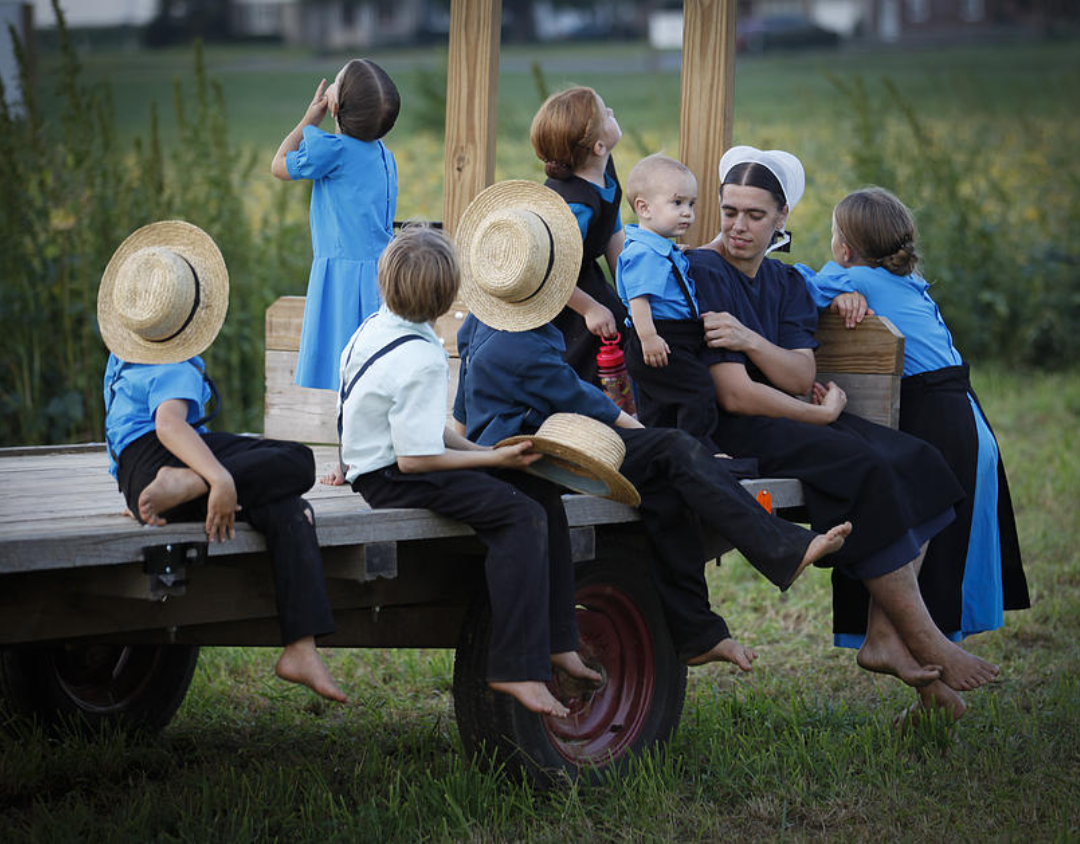One thing you might notice if you meet Amish families, and this is one thing that’s often commented upon, it’s that Amish children are quite well behaved. That’s one thing I hear a lot of comments on from people that visit the Amish and spend some time around Amish children. The children sit quietly, listen, and really have a pretty common, well-behaved demeanor.

According to Planting Seeds Book, “Children of Amish are normally well-behaved. Even if there are exceptions, normally they discern to speak when needed, and normally keep quiet in front of strangers or somebody else.”
Two things have a direct influence on how Amish children learn to behave.
One would be discipline at home. The second would be discipline in schools. That doesn’t mean that Amish children don’t play. It doesn’t mean that they don’t act rambunctious, and it doesn’t mean that they don’t get in trouble. But the Amish generally take a spare the rod and spoil the child approach to raising children.
And what does that mean in practice?
It means physical discipline. It means spanking when appropriate. This is not especially politically correct in today’s world. And for some people, this is a controversial thing, but you know, this is generally how the Amish do it. They use spanking, they use physical discipline to correct behavior and to teach children proper ways to behave.
How does that go? Or how is that done? Donald Kraybill, who wrote the classic book, “The Riddle of Amish Culture” covered this topic. And in that book, he cited an Amish leader who explained that by the time the child reaches the age of three, the mold has started to form and it is the parent’s duty to form it in the way that it should go. When the child is old enough to stiff in its back and throw back its head in temper.
When the child is old enough to stiff in its back and throw back its head in temper, it is old enough to start gently breaking that temper. The Amish see the importance of proper discipline to the children’s future development. But it’s generally recognized that spanking should not be done in anger, but out of love with the goal of teaching the child.
In the book, “The Amish Way” they also address this topic. And one mother in the book explains that when the children are old enough to fold their hands at prayer time, they’re also old enough to be reprimanded with light spanks when disobedient.
This is also from “The Amish Way;” they cite Hebrews 12:11“Now no chastening for the present seemeth to be joyous, but grievous: nevertheless afterward it yieldeth the peaceable fruit of righteousness unto them which are exercised thereby.”

So it’s not something that a parent would really enjoy disciplining a child in that way. But what it brings about is a good thing, because you have a child who’s well behaved and well raised. So that’s what the Amish believe and feel, again, the idea their physical discipline must never be done in anger or frustration.
The authors of “The Amish Way” also quote an Amish handbook on the Christian life, which asks the question, “Is there a wrong time to punish a child? The answer there is yes, when you are angry. So unless it hurts you more than the child stop at once until you can discipline in a spirit of love. So the child should also understand the reason for the discipline.“
The authors here in this book actually note that a lot of people today might find this disturbing to think about physical punishment, and find spanking even abusive. The authors cite one Amish mother named Naomi, that said, “basically letting children go without discipline is quote the cruelest kind of child abuse.”
She poses a rhetorical question “Now wouldn’t it be abusive above all abuses to withhold from our children, the training they need for a life of discipline and self-control of service to God.”
The Amish also discipline in schools, and you may think of this as sort of old mode from the1950s schooling in America where the school teacher would use the ruler across the knuckles kind of discipline in schools, which of course we don’t see anymore in American schools.
Karen Johnson-Weiner who wrote the book “Train Up a Child: Old Order Amish and Mennonite Schools,” looks at this question. She surveyed a variety of Amish schools. And as I mentioned at the beginning, the Amish approach things differently. They also have different approaches to schooling.
Corporal Punishment In Amish Schools
Karen Johnson-Weiner found that in some cases, teachers will be expected to make use of corporal punishment in the schools to discipline children as well. She finds it more in the conservative schools, such as those are the Schwartzentruber Amish.
Karen Johnson-Weiner quotes one Schwartzentruber Amish teacher who said, “if you don’t spank the children that need it, you could lose your job. The school board wants discipline.” She even found that sometimes teachers in the progressive Amish schools may occasionally use physical discipline. One teacher in a progressive Amish school said that “we do resort to the paddle if need be and depending on the offense, although it is not the most exciting job, it brings amazing results. In my six years. I’ve spanked only once. And I hope I won’t have to again. Some forms of discipline will be less harsh or less physical. Let’s say teachers may also talk with students to explain the reasons and need for punishments. That’s probably more common. Students may have to sit inside during recess or write additional lines of handwriting. Parents may be asked to help to maintain order with children in some cases.“

In summary parents and teachers don’t enjoy disciplining their children. I don’t think parents really anywhere will, at least not in healthy situations. But they feel that not doing so would mean neglecting the child’s wellbeing. They feel that physical discipline when used properly is the most effective way to do that.
So I hope I have explained clearly how the Amish discipline and train up their children.













